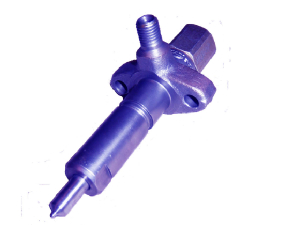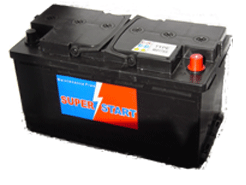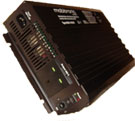Fuel injector function
Each fuel injector sprays fuel into the engine either through the air intake (petrol engines only) or directly into the combustion chamber. The spray pattern of the injector nozzle is critical and determines the distribution of fuel into the combustion chamber.
Mechanical fuel injector :
The mechanical fuel injector operates by a build up of pressurised fuel causing a spring loaded plunger to lift a needle allowing the fuel to exit from the injector spray nozzle at high pressure through very small holes in the injector nozzle. This achieves atomization of fuel as the sprayed fuel mixes with air inside the combustion chamber. The quantity of fuel injected is determined by the fuel pump. A development of this system is the high pressure unit injector.
Electronic fuel injector.
The electronic fuel injector consists of an electromagnetic solenoid coil which moves a spring loaded plunger when energised by an electrical pulse causing a needle to lift and allow fuel to flow through the injector nozzle. Electronic fuel injection has advantages over mechanical systems allowing greater control of injection quantity and timing resulting in better fuel economy, quieter operation and reduced exhaust emissions.
Piezo electronic fuel injector.
Piezo crystals are effected by electrical pulse to operate piezo type fuel injectors. The piezo type injector is used in some later design common rail diesel engines to provide the benefit of faster operation and greater control leading to reduced emissions and better efficiency.
Types of electronic fuel injection:
Multipoint injection system: (MPI)
A multipoint injection system consists of at least one injector per engine cylinder. Fuel flow through each injector should
be balanced. Sequential fuel injection systems
may use a camshaft position sensor to determine firing
cylinder order.
(may also be known as "port fuel injection" on petrol engines)
Single point fuel injection
Gasoline Single point injection system : (SPI) sometimes referred to as "centre point
injection"; or "throttle body injection" (TBI).
Fuel is injected into the throttle body at a single point before the throttle valve where maximum air flow
occurs. This system looks very similar to a carburettor with electronic control .
Injection pressure :
Fuel injection fluid pressure is generated by a fuel pump. Fuel for combustion is delivered via fuel lines to the injectors.
The fuel pressure is controlled by allowing a certain amount of fuel to be returned to the fuel tank via a pressure regulator.
Higher pressure allows better atomisation of fuel .
Fuel pressure faults can be caused by restricted fuel lines, system leaks, blocked filter, defective pump, defective
fuel pressure regulator.
Fuel flow:
Fuel flow requires pressure. The amount of fuel flow available will determine the amount available for injection. Fuel flow could also be controlled by fuel pump rotor speed. Restrictions in fuel flow can be caused by eg, blockages in fuel lines, blocked fuel filter, defective fuel pump,etc.
Injection duration : (Duty cycle)
This is the amount of time during the injection cycle that fuel flows from the injector nozzle. The longer the injector opening time the greater the quantity of fuel flowed through the injector nozzle.
Lambda control (Petrol or Gas engine)
Modern fuel injection systems achieve closed loop control when the
engine reaches normal operating temperature (coolant sensor signal)
by measuring the quantity of oxygen (burnt as the fuel is combusted)
in the exhaust gas .
Injector balance:
To achieve smooth engine running and optimum performance , the amount of fuel flowing through each injector on a multi point
fuel injection system needs to be balanced.
Injector flow bench testing:
Flow bench testing of injectors requires them to be removed from the engine. The removed injectors are set up in the test
bench and supplied with a fuel substitute test fluid. The electronic injectors are connected to a controlled power source
and pulsed as they would be in the engine. The fuel flow from each injector is collected in a measuring tube and compared
to other injectors from the set and against calibration specifications.
The spray pattern from each injector nozzle is checked.
Defective injectors can be identified, cleaned, repaired or renewed.
Why do injectors deteriorate?
Fuels contain chemicals which can form lacquer ( or varnish ) , over periods of time this lacquer builds up and clogs the
very fine holes in injector nozzles and can stop the needle valves from seating properly resulting in blockages and deterioration
of the spray pattern.
Dirt contamination in the fuel system can also cause blockage etc.
Condensation in fuel tanks can introduce moisture into the fuel system which can cause rust resulting in nozzle deterioration.
Electrical breakdown can result in failure of the electromagnetic solenoids.
What faults are caused by defective injectors?
Fuel injectors with a defective spray pattern causing poor atomisation which may result in 'flooding', excessive fuel consumption
and high exhaust CO emission and subsequent MoT test fail.
Blocked fuel injectors can result in incorrect fuelling leading to an excessively lean mixture. A lean fuel mixture requires
a higher spark kV to ignite the mixture leading to problems with ignition systems / coil packs etc , overheating, and damaged
valves.
How are injectors cleaned?
Once removed from the engine , Injectors may be cleaned ultrasonically to remove dirt contamination and lacquer deposits.
The filters can be replaced and if required new nozzle etc, fitted to the defective injector.
Injectors can then be rechecked on the flow bench to ensure they meet performance specification .
Injector servicing should increase performance and fuel economy.
We recommend petrol fuel injectors are cleaned and tested with ASNU equipment.







